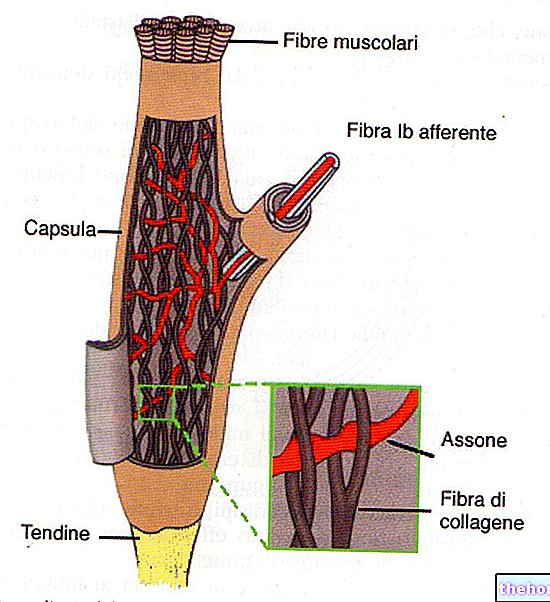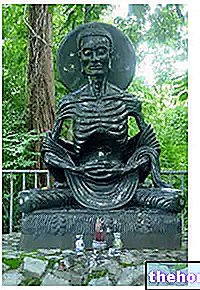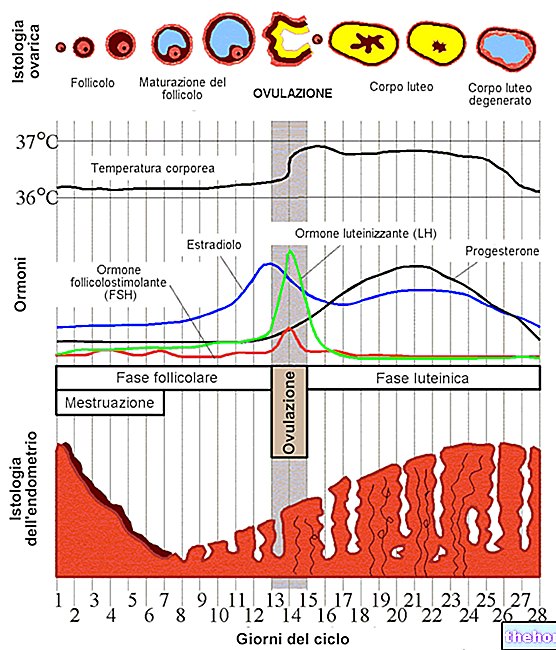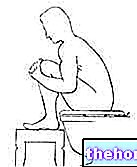What is that
Estradiol (E2) is a sex hormone, the most important of the human estrogens (estrone E1, estradiol E2 and estriol E3).
Typical of women during the fertile period, estradiol is also produced in lower concentrations by the male organism.
Estrone and Estradiol are interconvertible, and this possibility means that in women of childbearing age the ratio between E1 and E2 is approximately 1: 1.

The potency of estrone is about 12 times lower than that of estradiol, but its biological importance is not to be underestimated, especially in menopause. In fact, when around the age of 50 the woman ceases the ovarian production of estradiol, estrone can become the dominant estrogen. During pregnancy, on the other hand, estriol, a steroid of placental origin with very limited estrogenic activity, increases.
Functions
In addition to intervening in the sexual functions, both primary (reproductive) and secondary (breast development, etc.), estradiol influences the functionality of various organs and tissues; for example, it carries out a "protective action against" osteoporosis and various cardiovascular diseases, contributing among other things to the tropism of skin and hair.
Furthermore, during puberty, estradiol contributes to the maturation of the female reproductive organs (vagina, uterus, fallopian tubes, ovaries) and stimulates the appearance of secondary sexual characteristics, especially the development of the breasts and the typical body conformation with deposition of fat in areas preferential (breasts, hips, thighs). The sharp drop in estrogen levels, associated with the cessation of ovarian activity, is responsible for many of the disorders of menopause.
Secretion
Menstrual cycle and Estradiol secretion

In women of reproductive age, most of the estradiol is produced by the ovaries under the stimulation of the adenohypophyseal hormones LH (luteinizing) and FSH (stimulating follicle): the pituitary luteinizing hormone (LH) binds to the receptors of theca cells promoting the synthesis of androgens (androstenedione and testosterone), which are largely taken up by the granulosa cells and readily converted into estradiol (androstenedione can also be converted into estrone). The two cell types just mentioned belong to the ovarian follicle, that is to the structure containing the egg cell and its lining, the outermost layer of which is made up of theca cells, and the innermost layer of granulosa cells.
The aromatase enzyme, which converts androgens into estrogen, is not the prerogative of granulosa cells; this enzyme is in fact expressed in various tissues, especially in the adipose one. Consequently, estradiol levels are generally higher in obese women and men compared to normal weight. In addition to adipose tissue, a non-negligible amount of estrogen is also produced by skeletal muscles, liver and adrenal cortex. This last amount of estradiol becomes particularly important after menopause, a period in which the main active steroid estrogenic is estrone.
In the bloodstream only a small amount of estradiol is separated from the transport proteins, while the majority circulates closely linked to the so-called SHBG (sex hormone transport proteins), and in a more labile way to albumin. Among these fractions only the free one. (About 2.2%) is biologically active, since - given its lipophilicity - it freely crosses cell membranes and interacts with its cytoplasmic receptors, regulating gene transcription and protein synthesis.
In humans, a certain amount of estradiol is produced by the testicular cells of Leydig and at the peripheral level by the aforementioned intervention of the aromatase enzyme.
Values and Blood Analysis
PREPARATION OF THE PATIENT FOR THE EXAMINATION:
Fasting within 12 hours prior to blood collection.
MAIN INDICATIONS
Alterations of the menstrual cycle, functioning tumors of the ovary and control of patients undergoing induction of ovulation and assisted fertilization.
EXTRADIOL LEVELS - REFERENCE INTERVALS
Female - Follicular phase
10 - 178 pg / mL
Female - Preovulatory peak
48 - 388 pg / mL
Female - Luteal phase
31 - 247 pg / mL
Female - Menopause
0 - 30 pg / mL
Males
10 - 45 pg / mL
LOW ESTRADIOL
Low levels of 17-B-Estradiol may be present in the following pathological conditions:
- hermaphroditism e
- pseudo-hermaphroditism,
- hypogonadism
- hypogonadotropinemic,
- adrenal hyperplasia with 21-hydroxylase blockade.
In women of childbearing age, the drop in estrogen can be caused by particularly restrictive diets, especially when associated with strenuous physical activity.
HIGH ESTRADIOL
Elevated levels of 17-B-Estradiol may be present in the following pathological conditions: estradiol-secreting ovarian tumors, testicular tumors, liver failure. High levels of estradiol are involved in some cancers, such as breast cancer and cancer of the uterine lining; in addition there are several benign gynecological conditions that depend on estrogen, such as endometriosis. When men produce too much estradiol they have some female characteristics, such as an increase in breast tissue (gynecomastia).
Examples of EXTRADIOL-BASED DRUGS
Climara ®, Estrofem ®, Ephelia ®




























